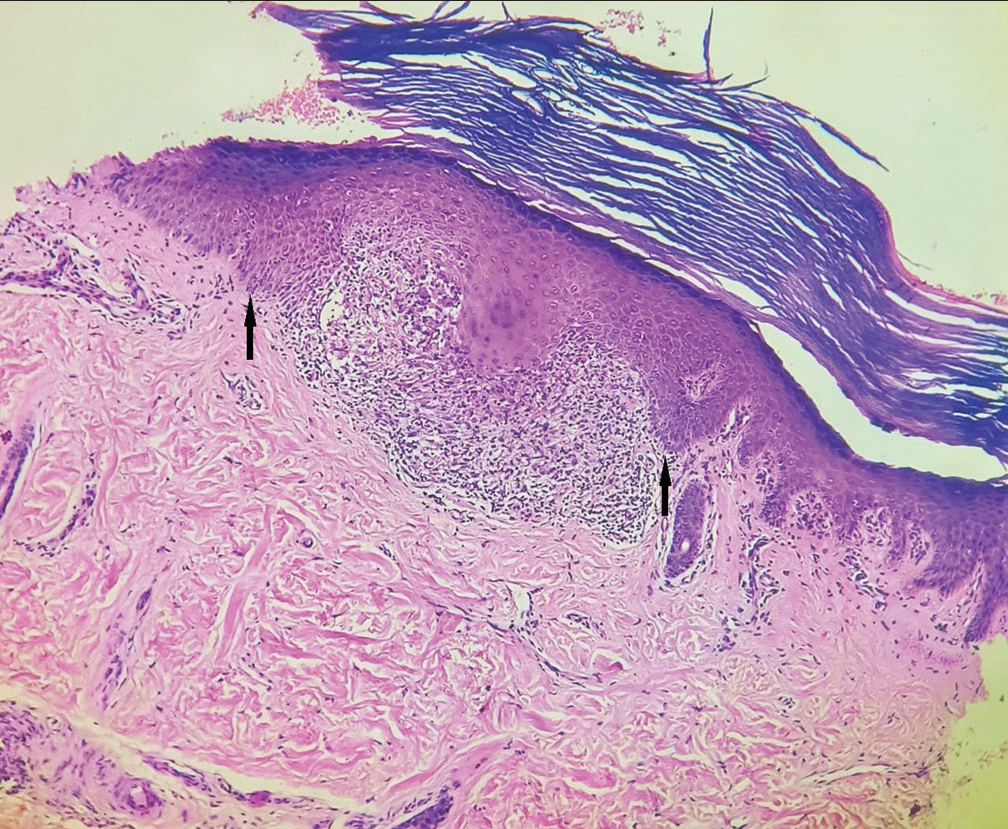Translate this page into:
Lichen nitidus unusual site and atypical morphology

*Corresponding author: Pradeep S. Nair, Department of Dermatology and Venereology, Government Medical College, Thiruvananthapuram, Kerala, India. dvmchtvm@yahoo.co.in
-
Received: ,
Accepted: ,
How to cite this article: Rafi S, Nair PS. Lichen nitidus unusual site and atypical morphology. CosmoDerma 2023;3:143.
An 11-year-old boy presented with asymptomatic lesions on the right sole for 3 months. There was no preceding trauma. There was a negative history of topical application. On examination, there were multiple discrete and confluent hyperpigmented and skin-colored pin-point papules with pits on the plantar crease extending from the medial aspect of the right plantar region to the midline just below the forefoot [Figure 1]. Pitted keratolysis and plantar punctuate warts were the differentials considered. Skin biopsy from the plantar lesion revealed a mononuclear infiltrate just below the epidermis with the rete pegs “clutching” the infiltrate resembling a “claw clutching a ball,” diagnostic of lichen nitidus [Figure 2]. The patient was treated with clobetasol–salicylic acid ointment (3%), and the lesions resolved. Rare presentations of lichen nitidus are involvement of the palms and soles, generalized lesions, linear, Blaschkoid pattern, hemorrhagic, purpuric, and mucosal involvement. We are reporting one more morphology – pits. The thick stratum corneum and pressure effect on the plantar region due to shearing forces may cause the typical morphology of dermatosis to be modified in the plantar region.[1]

- Multiple discrete and confluent hyperpigmented papules and pits on plantar region.

- Skin biopsy showing hyperkeratosis, irregular acanthosis with rete pegs “clutching” mononuclear infiltrate in the upper dermis, H and E × 100.
Declaration of patient consent
The authors certify that they have obtained all appropriate patient consent.
Conflicts of interest
There are no conflicts of interest.
Use of artificial intelligence (AI)-assisted technology for manuscript preparation
The authors confirm that there was no use of Artificial Intelligence (AI)-assisted technology for assisting in the writing or editing of the manuscript, and no images were manipulated using AI.
Financial support and sponsorship
Nil.
References
- Lichen nitidus presenting as palmoplantar hyperkeratosis and nail dystrophy. Clin Exp Dermatol. 1993;18:381-3.
- [CrossRef] [PubMed] [Google Scholar]





